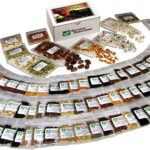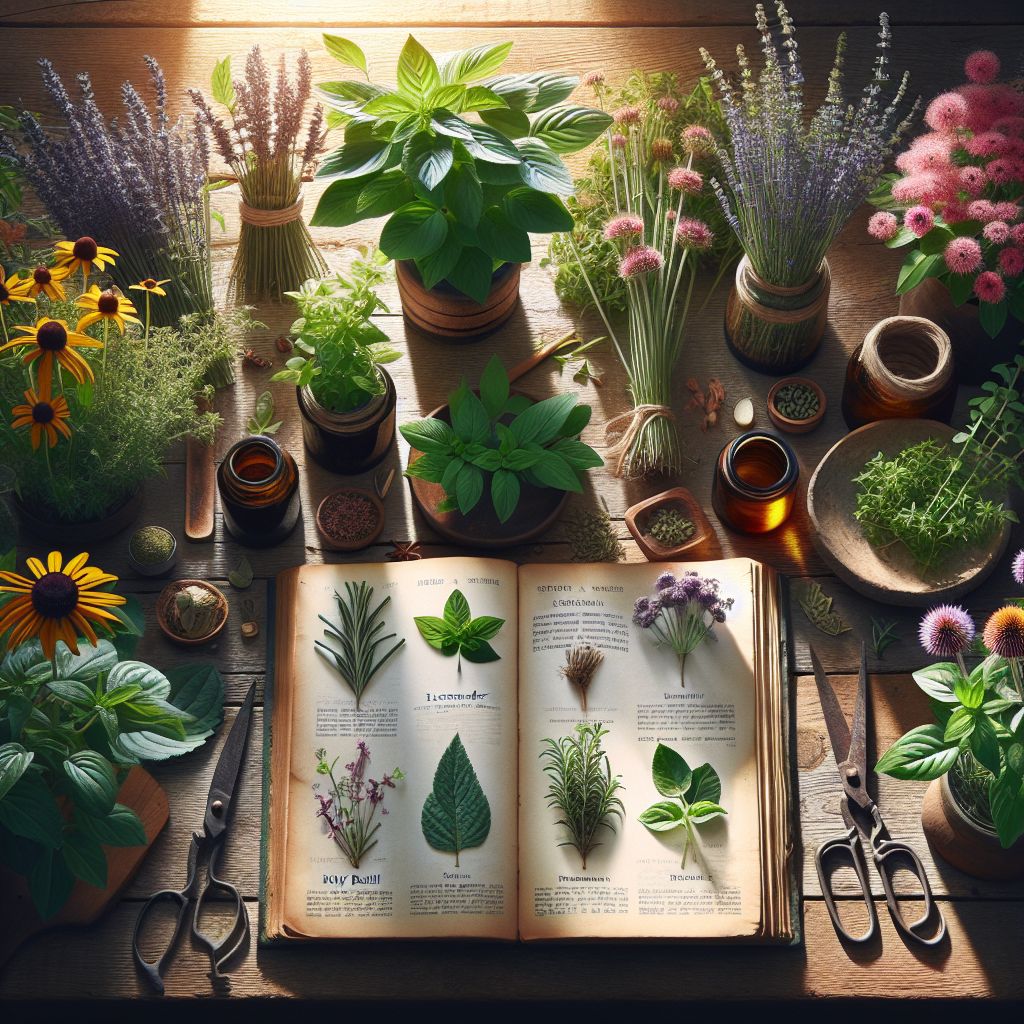
Key Takeaways
- Medicinal herb gardens provide natural remedies right at your doorstep.
- Non-GMO and organic seeds ensure a pure, potent medicinal harvest.
- Starting your garden requires selecting the right location, preparing soil, and proper planting.
- Regular care, including watering and pest management, is crucial for a thriving herb garden.
- Harvesting at the right time maximizes the healing properties of your herbs.
Why Grow Medicinal Herbs in Your Survival Garden?
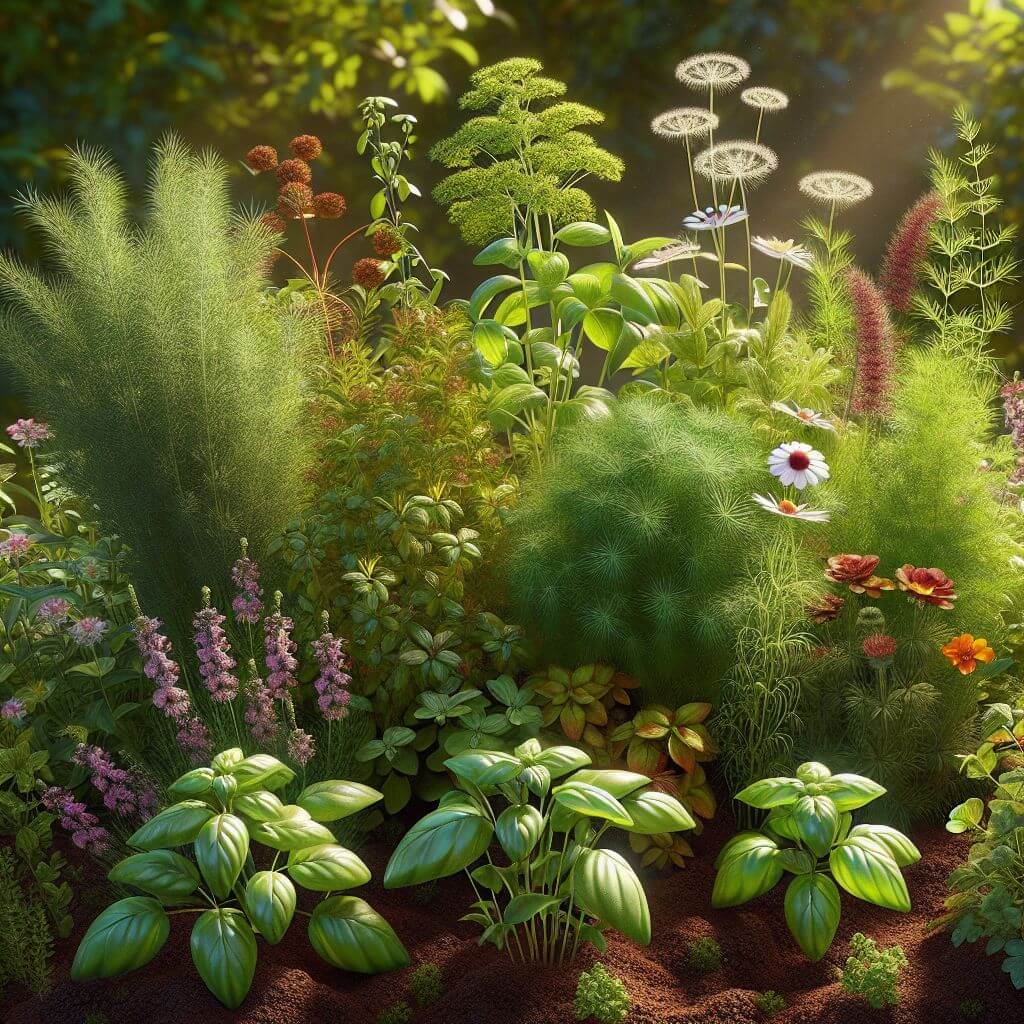
Imagine having a natural pharmacy in your backyard – one where you can pluck remedies off the stem, free from synthetic chemicals. That’s the power of a medicinal herb garden. In a world where self-sufficiency is becoming ever more important, growing your own medicinal herbs means you’re always prepared – not just for minor health hiccups, but for any situation where traditional healthcare might not be readily available.
The Shift to Natural Health
There’s a growing movement towards natural health, and for good reason. People are seeking control over their well-being, and what better way to do that than by growing herbs that have been used for centuries to treat ailments? Whether it’s peppermint for digestion or chamomile for better sleep, these plants offer gentle, effective alternatives to over-the-counter medicines.
And let’s not forget, cultivating your own herbs is not only good for your health, but it’s also kind to the planet. By reducing the need for packaged goods, you’re cutting down on waste and ensuring that what you put into your body is as clean and pure as it gets.
Essential Medicinal Herbs for Your Garden
Starting your own medicinal garden might seem daunting, but it’s easier than you think. Here are some must-have herbs to get you started:
- Echinacea: Known for boosting the immune system.
- Lavender: A soothing herb that promotes relaxation and sleep.
- Peppermint: Great for digestion and a natural pain reliever.
- Calendula: Has anti-inflammatory properties and helps in healing wounds.
- Lemon Balm: A mood enhancer that can also help with anxiety and insomnia.
Each of these herbs not only brings health benefits but also adds beauty and fragrance to your garden. And the satisfaction of using herbs you’ve grown yourself is unparalleled.
Selecting the Right Survival Garden Seed Kit
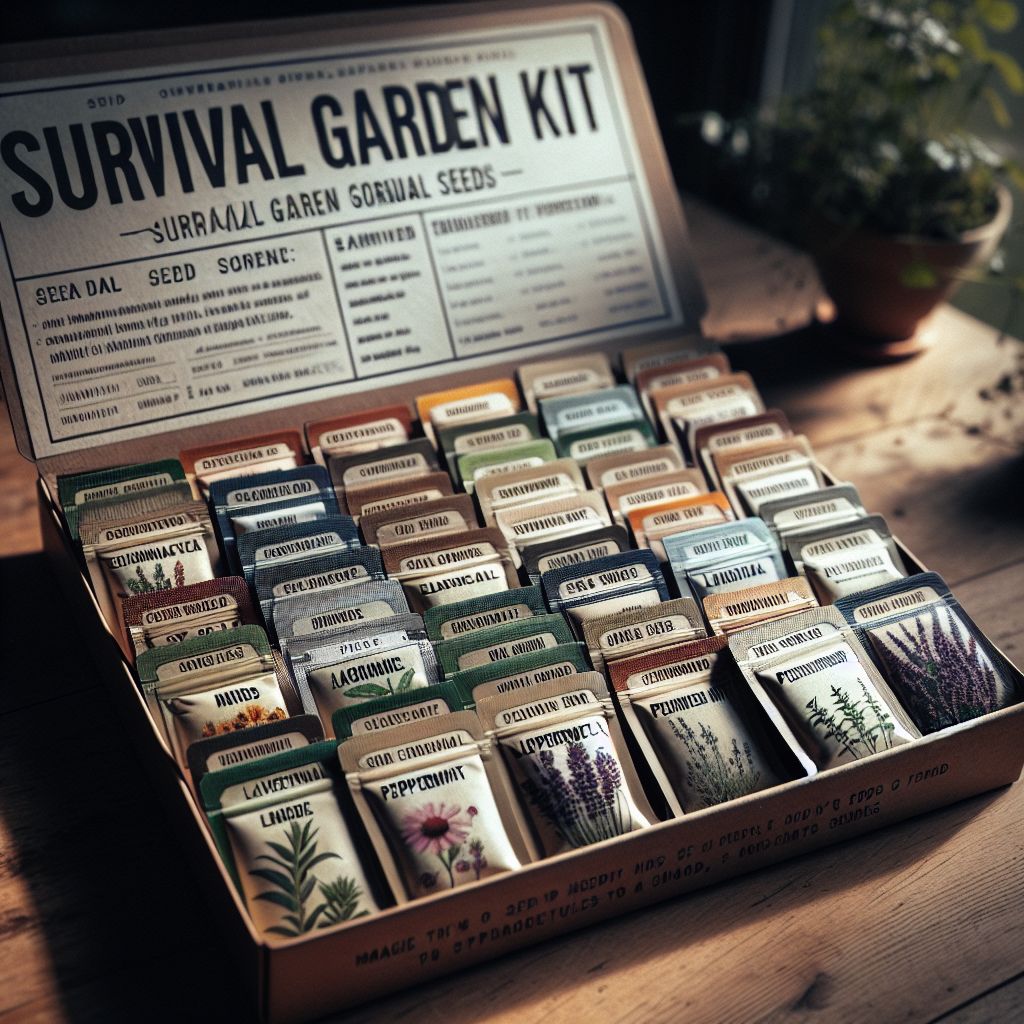
Choosing the right seed kit is crucial for your medicinal garden’s success. A good seed kit will provide you with a variety of herbs that can address multiple health concerns, all while being easy to grow, especially for beginners.
When selecting a seed kit, make sure it includes a range of herbs that thrive in your specific climate and can be used to treat a variety of ailments. This way, you’ll have a well-rounded garden ready to meet your health needs.
What to Look For in Seed Quality and Variety
Here’s what to consider when picking out your seed kit:
- Variety: Look for a mix of herbs that can treat a wide range of conditions.
- Germination rate: High-quality seeds have a higher chance of sprouting into healthy plants.
- Purity: Seeds should be free from contaminants and non-GMO for the best medicinal properties.
Remember, the better the seeds, the more potent your herbal remedies will be. It’s worth investing in a kit that offers the best start for your garden.
For example, the Survival Essentials’ Medicinal Herb Seed Kit offers a curated selection of non-GMO, high-germination seeds, perfect for starting your home apothecary.
Most importantly, ensure that the seeds are suited for your growing conditions. Some herbs may need more sunlight or water than others, so it’s vital to choose a kit that matches your environment.
Understanding Non-GMO and Organic Certifications
When we talk about non-GMO and organic seeds, we’re talking about seeds that are free from genetic modification and grown without synthetic pesticides or fertilizers. This means you’re getting the cleanest, most natural start for your medicinal herbs.
Non-GMO and organic certifications are your assurance that the seeds you’re planting have not been tampered with and are as nature intended. This is especially important for medicinal herbs, as you want to ensure that all the healing benefits are preserved without any unwanted chemicals.
Starting Your Medicinal Herb Garden
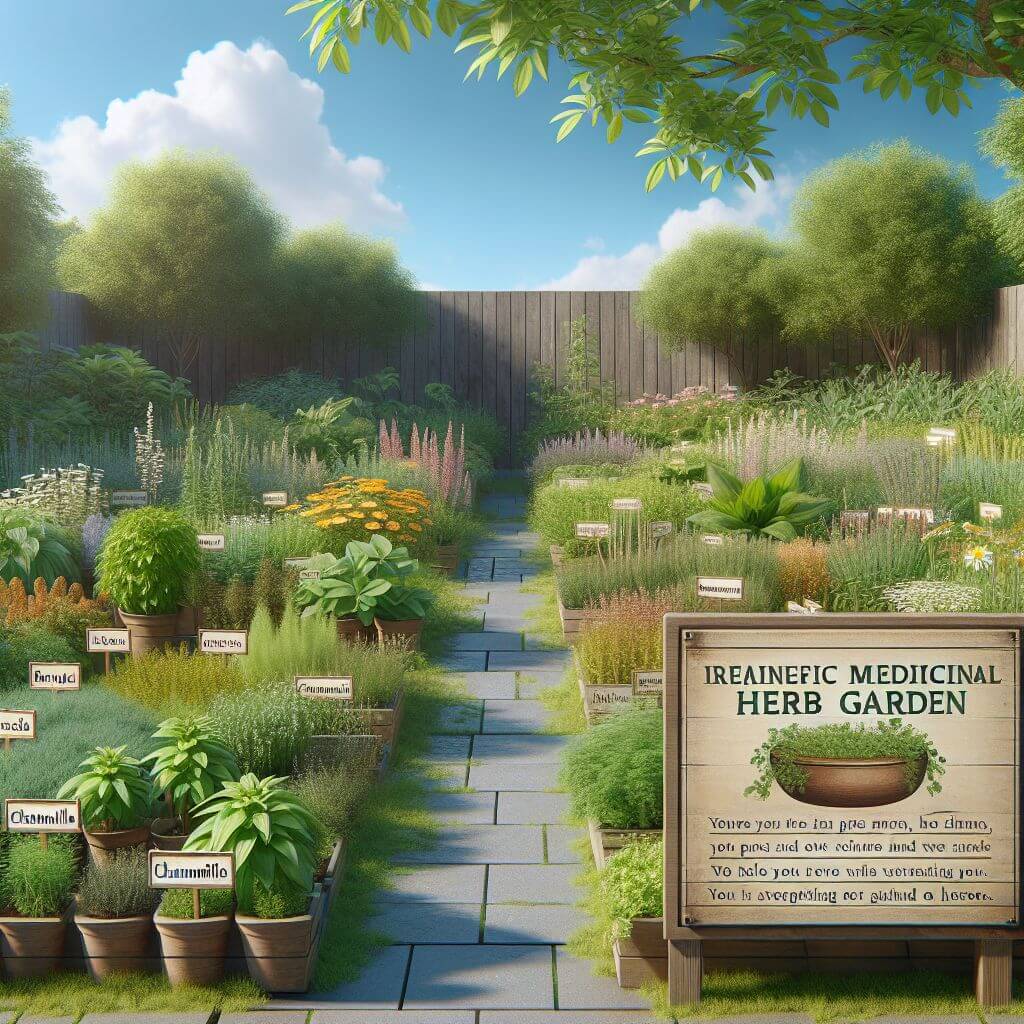
Now, let’s get down to the nitty-gritty of starting your garden. You’ll need to find the right spot – somewhere with plenty of sunlight, as most herbs thrive in full sun. You’ll also want to make sure the soil is well-draining and rich in organic matter. If you’re working with a smaller space or even a balcony, don’t worry; many herbs also do well in containers.
Prepping Your Space
Before you plant your seeds, you’ll want to prepare your soil. If you’re planting directly in the ground, loosen the soil and mix in some compost to give your herbs a nutrient-rich foundation. For container planting, choose a high-quality potting mix.
- Choose a sunny location with at least six hours of sunlight daily.
- Ensure the soil is loose, well-draining, and rich in organic matter.
- For container gardens, use pots with drainage holes and high-quality potting soil.
Once your space is prepped, you’re ready to plant your seeds. Follow the instructions on your seed kit for the best results, as each herb can have different needs.
Seed Sowing Best Practices
Planting seeds might seem like a simple task, but doing it right can make a world of difference. To ensure your seeds have the best chance at life, plant them at the depth recommended on the packet. Water them gently to keep the soil moist but not soggy, as too much water can cause the seeds to rot. Label your pots or garden rows with the herb’s name and the date of planting, so you can keep track of their progress.
Caring for Your Growing Herbs
As your seeds sprout and your herbs begin to grow, they’ll need regular care to flourish. This includes watering, feeding, and pruning. Most herbs prefer a steady supply of moisture but be careful not to overwater. Stick your finger into the soil; if it’s dry an inch below the surface, it’s time to water. Feeding your herbs with a balanced, organic fertilizer will help them grow strong and healthy. And don’t forget to prune them regularly to encourage bushier growth and prevent them from going to seed too early.
Remember, your herbs are living things, and they’ll let you know if they’re not happy. Keep an eye out for signs of stress, like yellowing leaves or stunted growth, and adjust your care accordingly. With a little attention and love, your herb garden will thrive.
Watering and Nutrient Requirements
Water is life, especially for young plants. Your medicinal herbs will need a consistent supply of water to develop their roots and grow. But it’s not just about quantity; it’s also about frequency and timing. Water in the early morning or late afternoon to avoid evaporation and ensure that the water goes deep into the soil, where it’s needed most. As for nutrients, a good rule of thumb is to feed your herbs with a balanced, organic fertilizer every four to six weeks during the growing season.
Combatting Pests and Diseases Naturally
Even the healthiest gardens can fall prey to pests and diseases. The key is to handle these issues naturally, without resorting to harsh chemicals that can diminish the medicinal qualities of your herbs. Keep an eye out for common culprits like aphids, spider mites, and fungal infections. You can combat these naturally with solutions like neem oil, insecticidal soap, or by encouraging beneficial insects like ladybugs and lacewings into your garden.
Harvesting and Utilizing Your Medicinal Bounty
Harvesting your herbs at the right time is crucial for their medicinal potency. Generally, the best time to harvest is just before the plant flowers, when the oils and flavors are at their peak. Use clean, sharp scissors or shears to cut the herbs early in the morning after the dew has evaporated but before the sun is at its strongest. This helps to ensure that you’re capturing the herbs’ essential oils, which is where much of the medicinal properties are concentrated.
When and How to Harvest
For leafy herbs, like basil or mint, pinch off the tops of the plants to encourage fuller, bushier growth. For herbs that you’ll be drying, such as oregano or thyme, cut whole stems and hang them upside down in a warm, airy place out of direct sunlight. Once dried, strip the leaves from the stems and store them in airtight containers away from light and heat.
From Plant to Remedy: Processing Herbs at Home
Once you’ve harvested your herbs, it’s time to turn them into remedies. There are many ways to process herbs, from drying and storing for teas to creating tinctures, salves, and oils. For example, to make a simple herbal tea, steep the fresh or dried leaves in hot water for about five minutes. To make a tincture, soak the herb in alcohol for several weeks, then strain. These homemade remedies are not only effective but also free from the additives and preservatives found in many store-bought products.
Top Medicinal Herbs and Their Health Benefits
While there are countless herbs with medicinal properties, some stand out for their broad range of benefits and ease of growth. Echinacea, for example, is renowned for its immune-boosting properties, while elderberry is a go-to for cold and flu prevention. Mint is not only refreshing but can also soothe an upset stomach, and chamomile is famous for its calming effects, aiding in relaxation and sleep.
Natural Immune Boosters: Echinacea and Elderberry
Echinacea and elderberry are two powerhouse herbs when it comes to bolstering your immune system. Echinacea is believed to increase the body’s production of white blood cells, helping to fight off infections more effectively. Elderberry is packed with antioxidants and vitamins that can help prevent and ease cold and flu symptoms. Growing these in your garden means you’ll have them on hand when you need to ward off or combat illness.
Stress Relief and Digestive Aids: Mint and Chamomile
Mint is a versatile herb that not only freshens breath but also has antispasmodic properties, making it great for relieving stomach aches and soothing digestive issues. Chamomile, with its gentle sedative effects, can help reduce stress and promote a good night’s sleep. These herbs are incredibly easy to grow and can be used in a variety of ways, from teas to topical applications.
Your Medicinal Garden Through the Seasons
Maintaining a medicinal garden is a year-round commitment, but it’s also a source of constant joy and discovery. As the seasons change, so will the needs of your garden. In the spring, you’ll plant and nurture new growth. Summer will be all about maintenance and early harvesting. Fall is the time to harvest and prepare your garden for the colder months, and in winter, you’ll plan for the next growing cycle.
Seasonal Care Tips for Perennial Herbs
Perennial herbs like sage and thyme require different care through the seasons. In the spring, prune them back to encourage new growth. Throughout the summer, ensure they have plenty of water and nutrients to grow. In the fall, you might want to mulch around the base to protect them from freezing temperatures. And in winter, let them rest and recover for the next growing season.
Your Medicinal Garden Through the Seasons
As the wheel of the year turns, your medicinal garden will require different kinds of attention. In spring, the focus is on planting and nurturing new life. Summer demands vigilance against pests and drought. Come fall, it’s time to harvest and prepare for winter. And in the colder months, while your garden rests, planning for the next cycle begins. This ebb and flow are natural, and understanding it will help you cultivate a garden that not only survives but thrives year after year.
- Spring: Planting new herbs and awakening perennials.
- Summer: Regular watering, feeding, and pest control.
- Fall: Harvesting and preparing the garden for winter.
- Winter: Rest for the garden and planning for spring.
Each season brings its own joys and challenges. Embrace them, and you’ll find that gardening is not just about the harvest – it’s about the journey.
During the warmer months, your garden is alive with the buzz of activity. Herbs are growing, flowering, and ready for harvesting. It’s a time of plenty, but it’s also a time to prepare for when things slow down. By drying or preserving your herbs, you ensure that you have a supply of medicinal remedies all year round.
When the cold sets in, it might seem like your garden is dormant, but this is when the magic happens below the surface. Roots are developing and strengthening, ensuring that come spring, your plants will burst forth with renewed vigor.
Seasonal Care Tips for Perennial Herbs
Perennial herbs are the backbone of any medicinal garden, offering a reliable source of remedies year after year. In spring, cut back any dead growth from the previous year to make way for new shoots. During summer, mulch to retain moisture and control weeds. As fall approaches, reduce watering to help harden off the plants before winter. When winter arrives, protect your perennials with a layer of mulch or, if in containers, move them to a sheltered spot.
With the right care, perennials like lavender, sage, and rosemary will become stalwarts in your garden, providing both beauty and medicine for many seasons to come.
Annuals and Biennials in the Medicinal Garden
Annual and biennial herbs, such as basil and parsley, have their own cycles and benefits. They often provide a burst of intense flavor and medicinal properties during their one or two-year lifespan. Plant these herbs in spring after the last frost, and enjoy their benefits throughout the growing season. Come fall, collect the seeds for next year’s planting, ensuring a continuous supply of your favorite remedies.
FAQ: Growing Your Own Medicinal Herbs & Herbal Remedies
- Start with easy-to-grow herbs like mint, basil, or chamomile.
- Choose herbs that are suited to your climate and space.
- Check local regulations on growing medicinal herbs to avoid legal issues.
- Research shows that certain herbs can improve health when used correctly.
- Store dried herbs in airtight containers away from light and heat.
As you embark on your gardening journey, you’ll likely have questions. Here are answers to some of the most common queries from budding herbalists.
Gardening is a learning experience, and each challenge is an opportunity to grow – both your plants and your skills. So, dig in, get your hands dirty, and discover the joys of growing your own medicine.
Remember, the most important thing is to start. Even a single pot of basil on a windowsill is a step towards self-sufficiency and natural health.
How Do I Start a Medicinal Garden with No Experience?
Starting a medicinal garden is like beginning a new adventure – exciting and a little bit unknown. Begin with herbs that are known for their resilience and ease of care, such as mint, basil, and lemon balm. These plants are forgiving and will give you the confidence to expand your garden over time. Most importantly, don’t be afraid to get your hands dirty and learn as you go. Nature is a patient teacher, and every mistake is a lesson learned.
Which Herbs Should I Start With in My Climate?
Your climate plays a significant role in determining which herbs will thrive in your garden. For cooler climates, consider starting with hardy herbs like sage and thyme. If you live in a warmer region, basil, oregano, and rosemary love the heat. Always check the growing requirements for each herb, and don’t hesitate to ask local gardeners or your community nursery for advice – they’re invaluable resources.
Are There Legal Concerns with Growing Certain Medicinal Herbs?
While most medicinal herbs are perfectly legal to grow, there are some, like cannabis, that may have restrictions depending on where you live. Always check your local laws and regulations before planting anything that could be considered controversial. It’s better to be safe and informed than unintentionally on the wrong side of the law.
Remember, the goal is to create a healing space, not a legal headache. Stick to well-known, widely used medicinal herbs, and you’ll be in the clear.
Can Medicinal Herbs Really Improve My Health?
There’s a wealth of historical and modern research that supports the health benefits of medicinal herbs. For example, echinacea is widely recognized for its immune-boosting properties, and chamomile has been scientifically shown to aid in relaxation and sleep. While herbs are not a cure-all, when used wisely and with respect for their potency, they can be a valuable part of a holistic approach to health.
How Do I Store My Home-Grown Herbal Remedies?
Proper storage is key to preserving the potency of your home-grown herbal remedies. Dried herbs should be kept in airtight containers away from light and heat, which can degrade their quality. Tinctures and oils should be stored in dark glass bottles to protect them from light. And remember, label everything clearly with the date and contents – it’s easy to forget what’s what once everything is bottled up.
With these tips, your herbal remedies will keep their potency longer, ensuring that when you reach for them, they’re as effective as the day you made them.
By growing your own medicinal herbs, you’re not just gardening – you’re taking the first steps towards a more self-reliant, healthy lifestyle. So why wait? Start your survival garden seed kit today and grow your own natural remedies for a healthier tomorrow.
Whether you’re an experienced gardener or just starting out, a Survival Garden Seed Kit can be an invaluable resource. With a curated selection of seeds for medicinal herbs and plants known for their herbal remedies, these kits can help you grow a garden that’s not only beautiful but also beneficial for your health. In times of need, having a self-sustaining garden could make a significant difference in your well-being.





